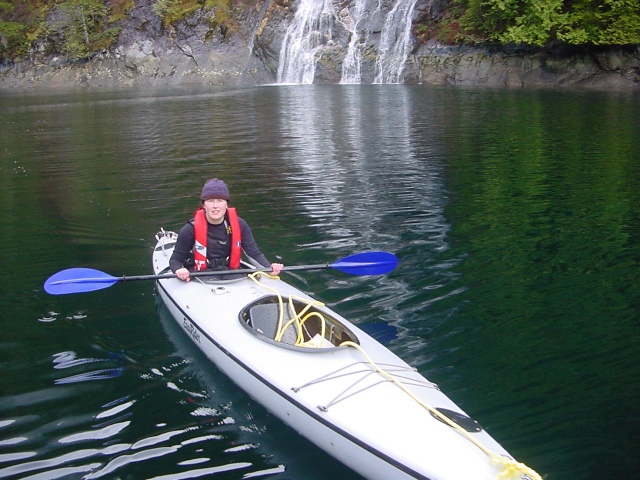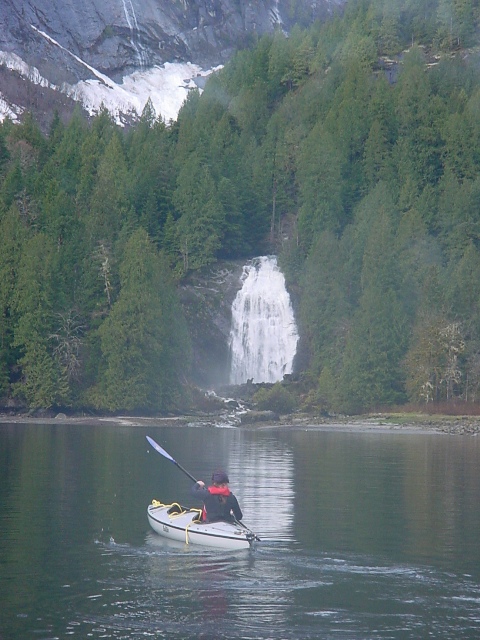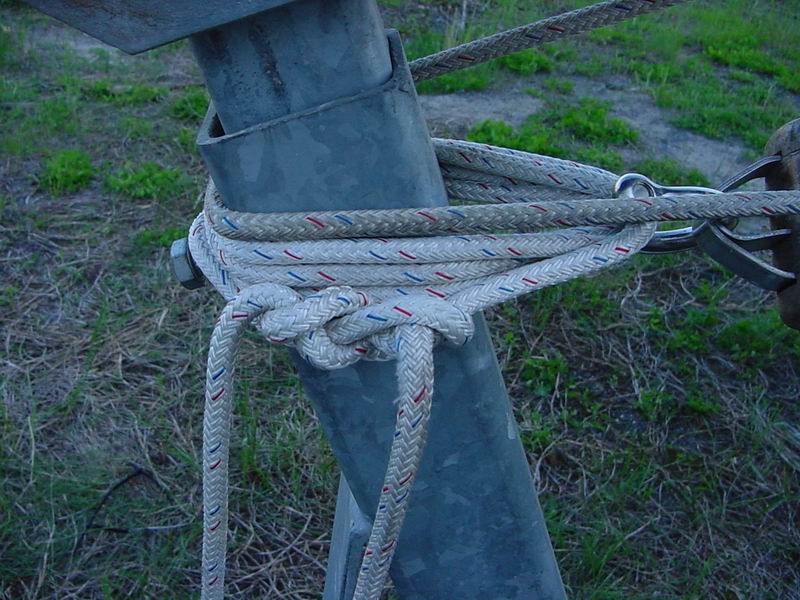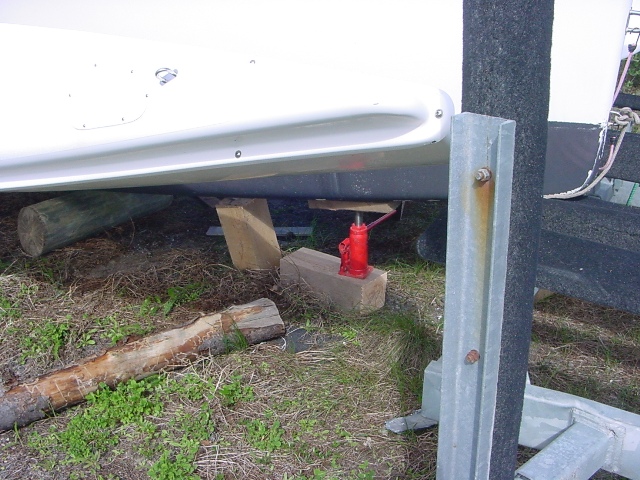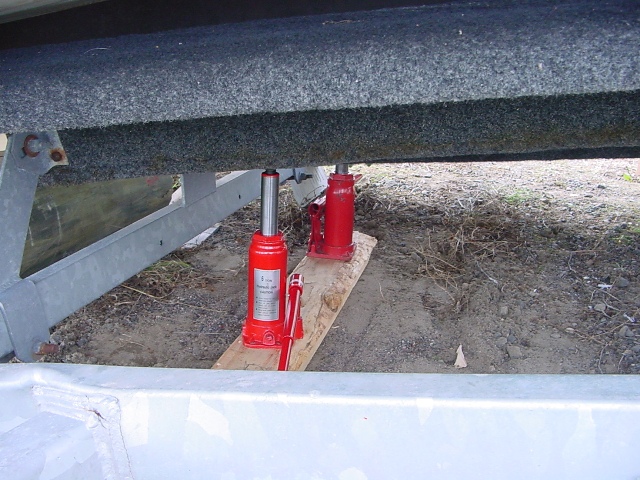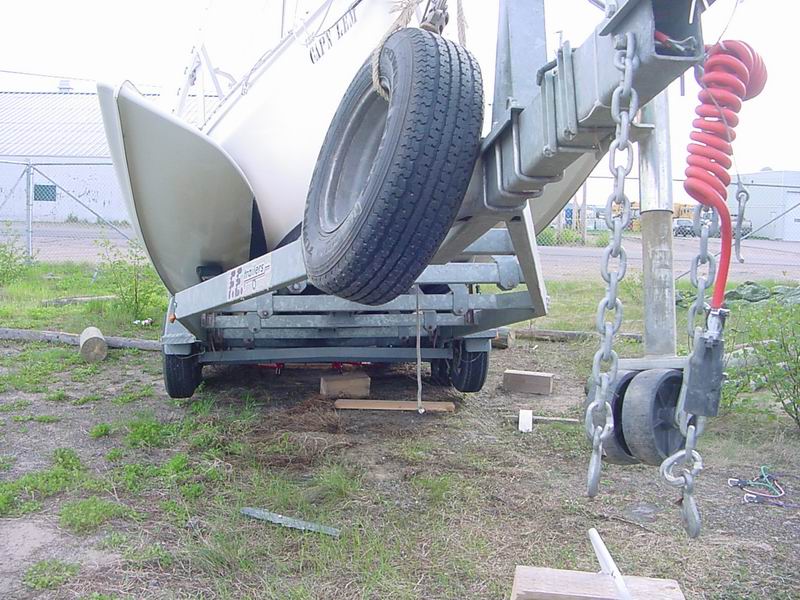The Block and Tackle
Launching and recovering a boat in the water with a trailer is easy. Floating things fall sideways with very little effort. A boat floating can be moved by the slightest of wind and sometimes remarkable fast as I experienced on Lake Superior when CAP’T LEM sailed a steady 5 knots with not so much as a ripple on the water. But a boat on land is entirely different. Next visit to a boatyard, notice all the sorts of contraptions used to move them on land. Travel Lifts, cranes and slings, dry docks and railways. This will give some idea of the obstacles that must be overcome when a boat is out of water.
Long ago, I found a little book at the Wooden Boat Shop (gone now and deeply missed) located down on the Montlake Cut in Seattle. I treasure that book and keep it stowed for quick reference on AVANTI. Its title, MOVING HEAVY THINGS br Jan Adkins. If any book is worth its weight in gold, this one is. It was artfully illustrated and beautifully written. It addressed all the things I’ve encountered in this segment of my adventure, friction, weight, leverage, incline planes and the block & tackle. But most useful, it talked about principles. One of the principles to use before attempting to move something heavy was to ask yourself “How did the old timers do it?”
I could have hired a mobile crane to just come pick it up and set it on the trailer, but what story would that make? No, no! Much better I ask myself “How would Captain Lem do it?”
It would go something like this, “So Cap, how would you pick that boat up off the ground and get it on the trailer, by yourself?” and I hear him in my minds ear. “Well, Tommy, the first thing ya gotta do, is get a couple a’ Jacks,… and lots of wood for dunnage… and a good stout block and tackle. And ya got to pay attention. You can’t be thinking about anything in the world but what you’re doing, so pay attention… And one more thing, pay attention!”
“Got ya, Cap. So what you’re telling me is I damn well better pay attention to what I’m doing, right? I’ll let ya know how it turns out. If I tell ya face to face ya know it didn’t turn out well.”
The boat weighs 3500# + or – but mostly +. The trailer winch will exert 1500# force on the first wrap. With each successive wrap the force lessens until on the final wrap of the drum it only exerts 700#. I must still deal with a lot of weight and a lot of force so, at first, I transfer most of the weight to the hydraulic jacks. One might say I am floating the boat on the backs of the Jacks. By raising the front of the boat with the stern still resting in the sand and letting the trailer come up in the air as I winch, I steal away much of the weight and the friction. The trailer wedges its way farther and farther aft until a point of balance is reached and the trailer stop moving under the boat and the boat then comes off the ground and slides the final distance into place. Simple! Yes, just not easy. The requirement is greater and greater force.
And this brings us to the block and tackle; mostly it’s the story of the blocks, the tackle having changed out a few times over the years. There are three blocks; one double sheave, one double sheave with a becket and one single sheave. Together they can exert a force 6 times greater than that applied to the working line. So my 1500# of force from the winch can be multiplied to 9000#. But this story is so much more than friction and force, for in these three pulleys are the visible reminder of all the boats I’ve own over the last thirty years.
I found them in the gift shop aboard the sailing ship Star of India in San Diego, 1981. They were so stout and lovely in the way sailors see things as lovely and so full of possibility. They made the perfect gift to my beautiful little Choey Lee Frisco Flyer, STORM TREE waiting to sail back on Puget Sound, so bought them with the last of my spending money for the month and stayed onboard when shipmates went to town, sanding and varnishing them. In those days I varnished them regularly and used them for sheet blocks and handy-billys and to climb the mast, and when I sold the boat, I kept the blocks. On my Monk Cutter, AURORA, they served as preventers and down hauls and up hauls and of course, mast climbers. (How to up-haul one’s self to the masthead, alone, we’ll discuss another time). On AVANTI, I’ve climbed the mast, main and mizzen, more times than I can remember. On the CAP’N LEM, they were instrumental in getting the boat on and off the flatbed truck the day I brought her to Goose Bay to spend the long winter on the hard.
Now, once again, these three wonderfully useful things have allowed me to do something far greater than is in my strength of arm and hand. When all is done, I think I will once again take them apart, clean them and grease them, shine the brass keepers and varnish them bright. There is still great beauty left in the teak of their cheeks and today my respect for them is renewed. They have moved the CAP’N LEM 288 inches!
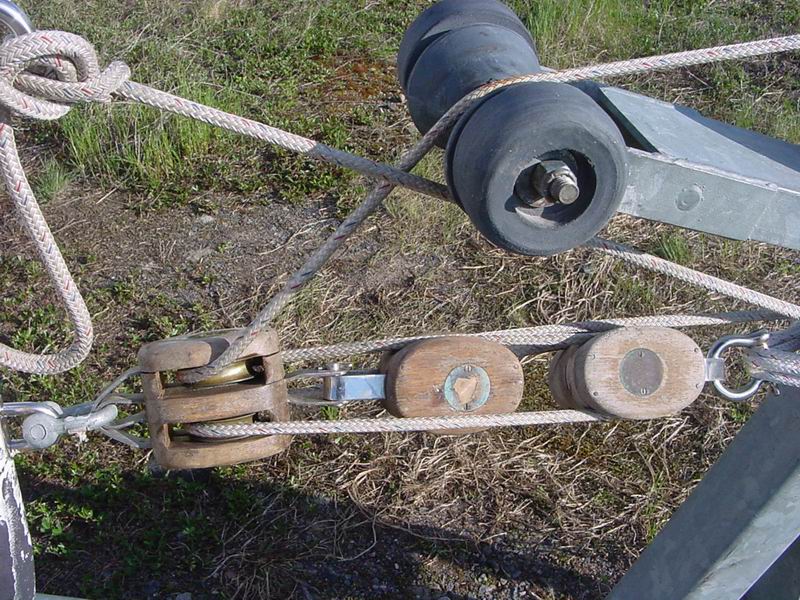
Toblocked

